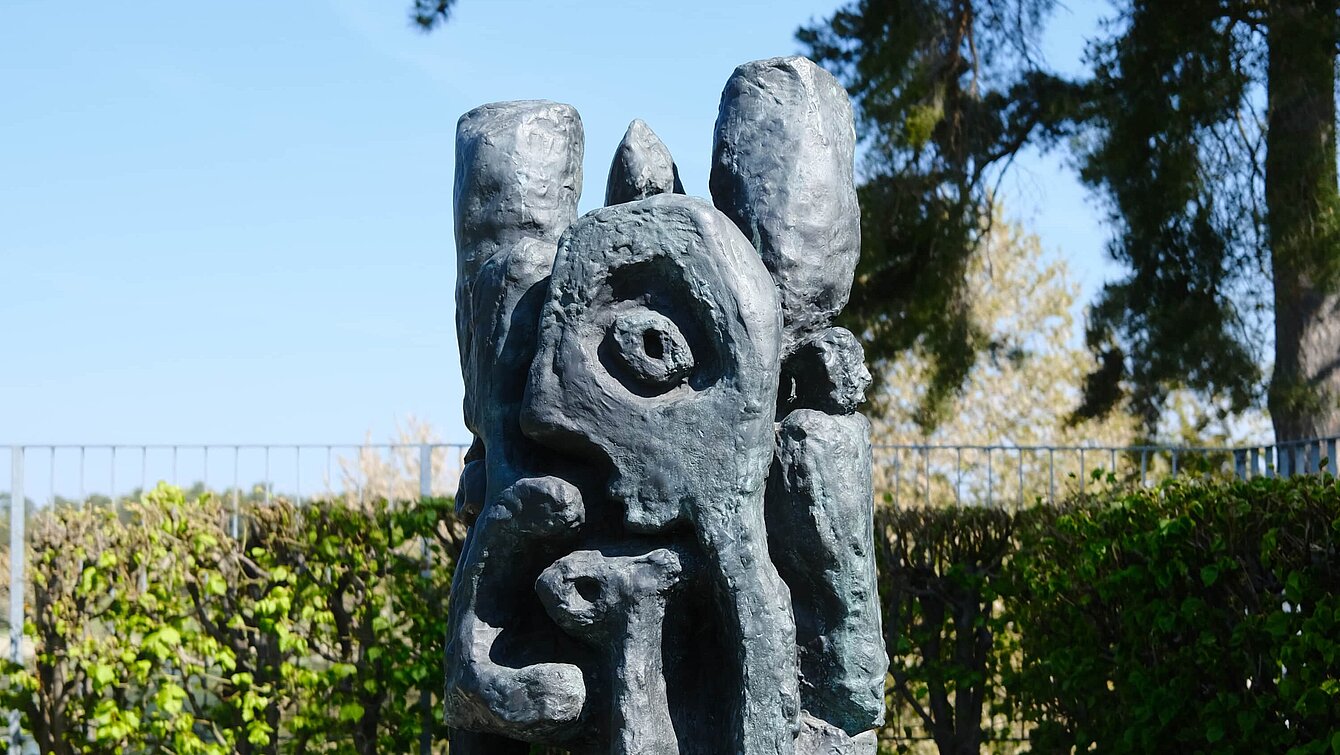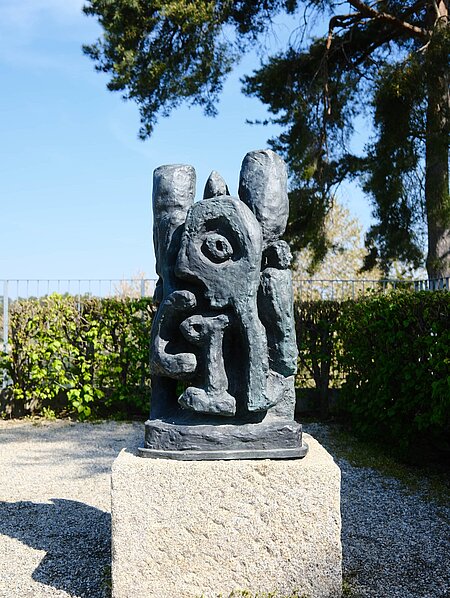DichteDichter was Damisch’s first sculpture and is unusually compact compared to his later works. It is reminiscent of the guardian figures on Easter Island, but defies any narrative or interpretation. There is no front, back or side – instead every step opens up new views. The heads, tubes, symbols and figures, which seem to have fallen out of time, are given equal value and constantly reinvent themselves in the natural change of light and shadow in the open air. The reference to density in the title also reflects the inextricable whole depicted here by deliberately omitting the space between the words.
DichteDichter II
Gunter Damisch


Image Credits
Author
Elisabeth Fiedler
Location on map
Position 75
Owner
Universalmuseum Joanneum (donation by Lucas and Maria Damisch)
Artist biography
Gunter Damisch
Show all
About the sculpture
Gunter Damisch saw himself as an intermediate figure in the second generation of the “Neuen Wilden” [new wild ones] in Austria. Impulsiveness and expression were important for him, whilst he and his friends regarded any narrative with scepticism. His roots can be traced to the works of the COBRA artists and on to the investigation of the unconscious among Surrealists, as well as their role models. His interest in the archaic coincided with that in the permeability of a virtual universalism. Abstraction and conceptualism characterise his way of working as much as the breadth of his modes of expression, ranging from painting and drawing through graphics, collage, carving, object to sculpture and his interests in performance, literature and music. So it was that he played bass and keyboard in the punk band Molto Brutto, released records and toured Germany.
Oscillating between micro and macro-cosmos, with his work he unfolded a dynamic, intertwined, compact yet, at the same time, explosive universe. A significant trait of his dynamism lay in continuous treatment of differing arrangements of deep structures and the tension between two and three-dimensionality, his interest in linguistic-literate and tonal-musical approaches, which he extended through the nomenclature and processuality inherent in his work. DichteDichter, his first sculpture, constitutes Damisch’s leap into three-dimensionality in his creative work.
This, his most compressed sculpture, is not a work that presents a front, rear or sides, but rather, with each step we take, it immediately reveals to us an everted panorama of new views, heads fallen out of time, tubes, symbols, figures appear as equivalent depictions, which seem to assemble a sensual framework with characteristics somewhere between the anthropomorphic and polymorphic that, the very next moment, deny the senses any attempt at a compact, assembled view.
The sculpture is reminiscent of the watchmen of Easter Island, whose taciturnity and defensive monumentality Damisch nevertheless prizes open. Evidence of a central motif is just as absent as the possibility of unequivocal interpretation. Equivalence and openness of merging situations, the sight of which transmogrifies on a second-by-second basis into a natural pattern of light and shade, together represent his special extension of a democratic understanding of sculpture. Spatiality, penetration, density and opening of the block as the beginning of permeability and the testing of resonances are accentuated by the continuously changing lighting conditions outdoors.
At the same time, the work seems like an enigmatic, almost hieroglyphically arranged structure, which evades all attempts at narration. Quite the contrary, through the title, Damisch draws in an additional level of ambiguity.
The absence of a space between the two words of the title allows their meaning to range between an imperative as a directive [make poetry, poet] and compression as an inextricable whole [density denser], the details of which one might think one partially hears. The forever translating units of proportion, spatial and superficial formats as well as interrelations of the legible, which enable both communicativeness and reclusiveness in equal measure, continue to admit novelty.



















